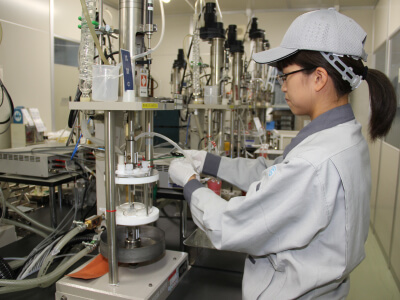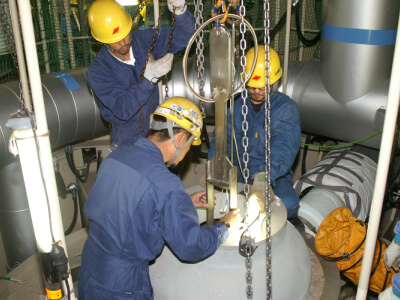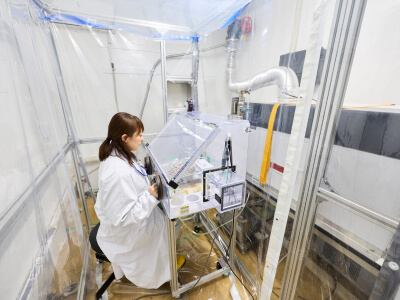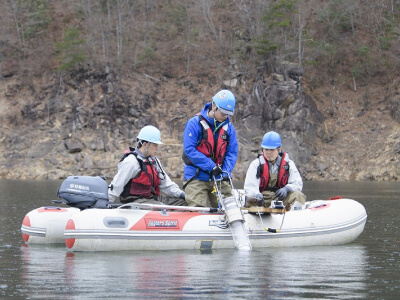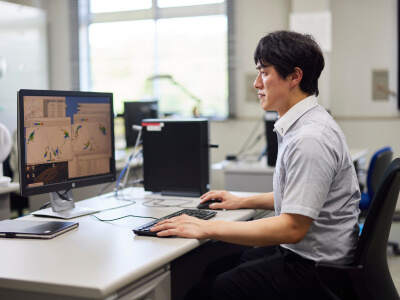JAEA Fellows
“JAEA Fellow” is a title granted to those who have highly advanced expertise, distinguished achievements, and track records in the area of expertise and lead the operations of JAEA with specialized skills. The following is a list of those who are certified as “JAEA Fellow”.
- A JAEA Fellow is an expert who has highly advanced expertise, distinguished achievements, and track records in the area of expertise and leads R&D of JAEA with professionalism and humanity.
- A research fellow (researcher) and an engineering fellow (engineer) refer to experts who have highly advanced expertise, distinguished achievements, and track records in the area of expertise and are expected to play an important role as a JAEA fellow in the future.
JAEA Fellows
Hideki Kamide, Area of expertise: Reactor engineering (Thermal hydraulics of fast reactors/system engineering)
Certified in fiscal 2022
PhD in Engineering. Master’s degree at the Graduate School of Engineering, the University of Osaka (1985). Chief Researcher at the Japan Nuclear Cycle Development Institute, Sector of Fast Reactor Research and Department, Director at the R&D Center for Next-Generation Fast Reactor Cycle, Vice Director at the Sector of Fast Reactor and Advanced Reactor Research and Development (2018). Research Fellow at JAEA (April 2022).
Dr. Kamide has engaged in R&D on sodium-cooled fast reactor (SFR) and promoted international cooperation with France and the United States as one of the leading experts in Japan in R&D on thermal hydraulics, contributing to technological developments in that field. He has played an important role in serving as the chairperson of GIF (international cooperation framework for development of generation IV reactors) for three years from January 2019, leading the collaboration with IAEA and the establishment of an international cooperative relationship in advanced reactor development, and delivered a statement on behalf of Japan at the IAEA’s International Ministerial Conference “Nuclear Power in the 21st Century” in October 2022, explaining the JAEA’s research results and the importance of “Joyo” as a irradiation infrastructure.

Akira Endo, Area of expertise: Radiation protection (dose measurement/assessment)
Certified in fiscal 2023
PhD in Science. Doctor’s Degree at the Graduate School of Science, Tokyo Metropolitan University (1988). Chief Researcher at the Japan Atomic Energy Research Institute, Section of Nuclear Science Research, Nuclear Science Research Institute, Director at the Nuclear Science and Engineering Center. Vice Director at the Section of Nuclear Science Research and Director at the Section of Nuclear Science Research, Nuclear Science Research Institute (April 2021).
Dr. Endo has engaged in radiation protection to protect humans and environments from the effect of radiation and research on technology to assess exposure dose which is an indicator of radiation protection. His research results have been employed broadly in radiation protection-related laws and regulations in Japan, shielding calculation manual, to name a few. In addition, he has contributed to the establishment of dose measurement/assessment technologies used in radiation protection and nuclear medicine at an international level by writing a number of technical reports at the International Commission on Radiological Protection, International Commission on Radiation Units and Measurements, and U.S. Society of Nuclear Medicine and Molecular Imaging for about 20 years. As a result of these achievements, he was awarded the Commendation for Science and Technology by the Minister of Education, Culture, Sports, Science and Technology in 2013 and the Medal with Purple Ribbon in 2019.

Yu Maruyama, Area of expertise: Nuclear engineering (safety)
Certified in fiscal 2023
PhD in Engineering (Tsukuba University). Master’s Degree in the Industrial Chemistry at the Graduate School of Science and Engineering, Ibaraki University (1986). Chief Researcher at the Japan Atomic Energy Research Institute, Section of Safety Research/Disaster Preparedness, Director at the Risk Assessment Research Division of the Nuclear Safety Research Center, and Vice Director at the Nuclear Safety Research Center (April 2018).
Dr. Maruyama has participated in the Risk Assessment Working Group at OECD/NEA/CSNI (Organisation for Economic Co-operation and Development/Nuclear Energy Agency/Committee on the Safety of Nuclear Installations) as a leading expert in Japan in SA (severe accident) of light reactors and research on source term assessment. In an international joint research project (ARC-F: Analysis of Information from Reactor Buildings and Containment Vessels of Fukushima Daiichi Nuclear Power Station) to conduct an assessment on the accident at 1F by OECD/NEA/CSNI administered by JAEA and FACE that started as an extension of the above project, Dr. Maruyama played a leading role in planning in cooperation with domestic institutions concerned (Nuclear Regulation Authority (NRA), Agency for Natural Resources and Energy, and Tokyo Electric Power Co., Inc. (TEPCO)) and supervising the project. Moreover, he served as a member of the review panel consisting of world-renowned experts in the examination on SA assessment at the U.S. Nuclear Regulatory Commission, making a great contribution to the promotion of safe use of nuclear power in Japan and other countries.

Research fellows
Katsuhisa Nishio, Area of expertise: Physics (Nuclear physics/Nuclear data)
Certified in fiscal 2022
PhD in Engineering. Doctor’s Degree at the Graduate School of Engineering, Kyoto University (1997). Chief Researcher at JAEA, Manager at the R.G. for Heavy-Element Nuclear Science, Advanced Science Research Center, JAEA Nuclear Science Research Institute, Principal Researcher at the Advanced Science Research Center (since July 2021). Leader at the R.G. for Exotic Heavy-Element Nuclear Science.
Dr. Nishio has achieved world-renowned research results such as the discovery of superheavy element new isotopes whose atomic numbers are 106 and 108, the discovery of giant dipolar oscillations of a fission fragment of uranium 235, and the development of a fission fragment measurement technology of atomic nucleus in the unexplored region due to multinucleon transfer reactions. In addition, he is highly appreciated by national and international experts as seen in the fact that he has been invited to deliver a discourse at well-known international conferences in the field of nuclear physics and serves as a director at various academic societies in Japan.

Tatsuhiko Sato, Area of expertise: Radiation science (Radiation physics/Biology)
Certified in fiscal 2022
PhD in Engineering. Doctor’s Degree at the Graduate School of Engineering, Kyoto University (2001). Chief Researcher at JAEA, Manager at the Research Group for Radiation Transport Analysis, Environment/Radiation Science Division, Nuclear Science and Engineering Center, Nuclear Science Research Institute, Nuclear Science Research Department. Principal Researcher at the said Division (since October 2020).


